Feb
24
2019

I was half way through this roll of Ultrafine Colouruption (ORWO NC-3) in my Konica Auto S3 when it stopped working. So I thought I would finish it in this camera with the idea that if it ended up being a grainy film that it would be accentuated by the half frame capture. However despite the strange colours the film is not particularly grainy. Nothing like the graininess of Adox Color Implosion although the colour shifts are even more extreme with this emulsion.
Here is a comparison shot taken with my Pentax Q7 digital camera and the Fuji Drive with Colouruption.


Now about the Fuji Drive. It has a 28mm f2.8 5 element lens which is surprisingly good but the cameras unique feature has to be that it uses a clockwork mechanism to advance the film. This is of course where it gets the name “Drive” from. The camera has a selenium meter that can be used for fully automatic exposure but you can also manually select shutter and aperture for more control. Also the meter system was made at a time when 100 ASA film was considered fast so it only goes to a maximum of 200 ASA. I’m also not really a fan of zone focus with most cameras so that’s a strike against it but if you pay attention to focus and set exposure manually you have a nice photography tool that is fun to use.
Another camera in my collection that has a clockwork film advance is the Ricoh Auto Shot.
no comments | posted in Cameras, Photography, Processing
Feb
17
2019

Some films age gracefully, some just fade away but Konica 400 VX does neither it turns everything magenta in a fit of rage. I know what your thinking ‘why don’t you just colour correct it?’ Well there is no colour correction on earth that can handle what ever this is. Yes I could adjust it but that would just give me a new set of weird colours.

I think I owe an apology and a roll of some decent film to my Yashica T3 now like this Agfa Vista 200 I used in it last time. Yashica T3 With Agfa Vista 200
no comments | posted in Photography, Processing
Feb
9
2019
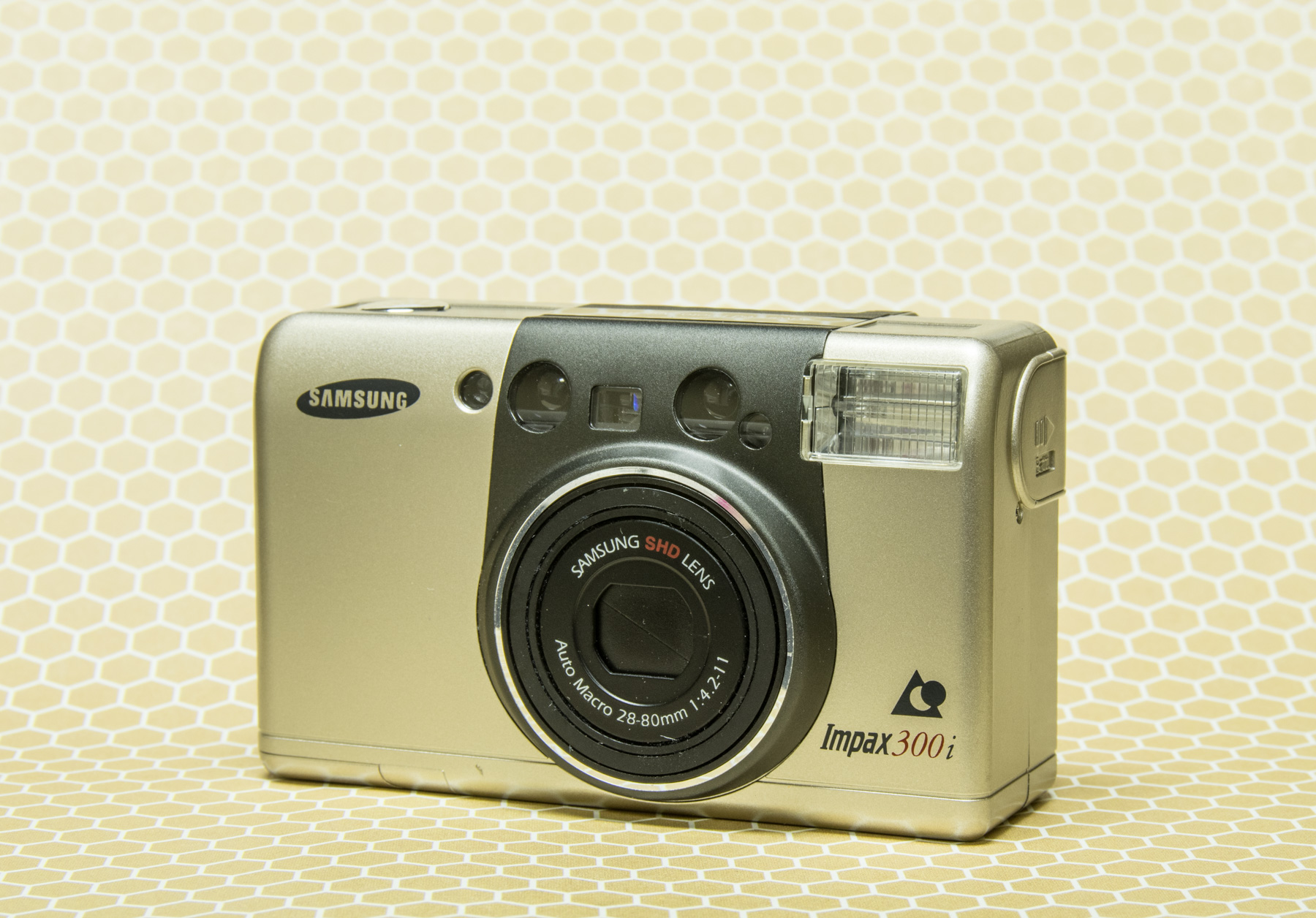
Not one to waste film I finished a half complete roll of film in a Samsung APS film camera. APS film does not age well but that’s okay the internet is forgiving.
Here is one of the images that was already on the roll. 
I imagine it was probably taken by a family member and original owner of the camera who then put the camera away until the battery was flat and couldn’t be bothered to buy another one so just donated, it I wish them all well.
The champagne colour Samsung Impax 300i sports a 28-80mm 8 element lens. On the front it is silkscreened with an aperture range of f4.2-11 but Samsung’s own advertising at the time claimed a 4.6 – 10.6 range not a huge difference but its odd that the claims vary.
Shooting what film was already in the camera was a gamble and in no way is indicative of what the camera probably can do with a decent roll but it is APS film after all. A film format that started bad and over time gets worse, enjoy. It’s interesting that the previously exposed images took on a pee soup colour while my fresh exposures have a washed out cyan look all contained on the same roll. I suppose that the earlier images taken when the film had greater sensitivity were able to remain stored in their latent form better than the unexposed film was able to survive the loss of sensitivity over time.
no comments | posted in Cameras, Photography
Feb
2
2019
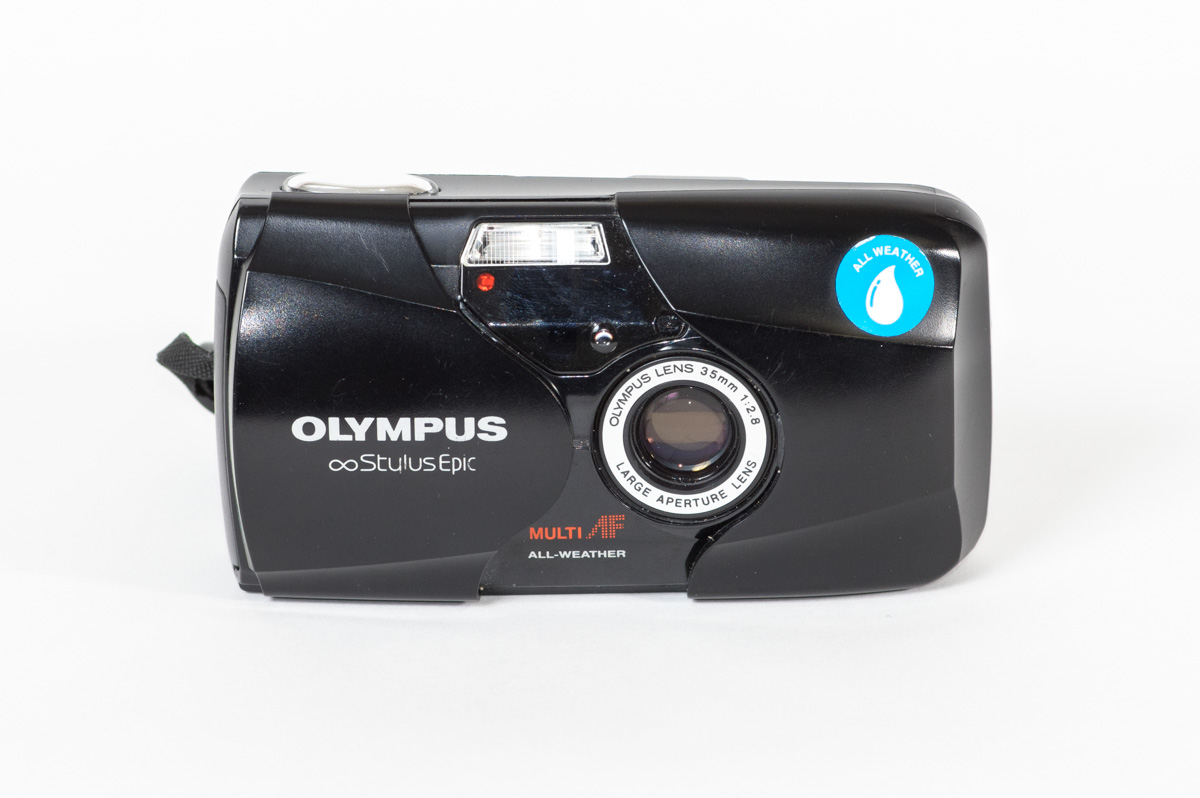
The Olympus Stylus Epic has always been a great deal of a camera. It sports a fantastic 35mm f2.8 lens with 4 elements. Released in 1997 Olympus says that they produced over 3.8million of them so they are easy to find used.
In 1999 they were available for $89 so you may want to keep that in mind when looking for a used one. They also tend to share a common problem of light leaks around the lens though so buying one may not be enough why not two or three if the price is right. 
image curtesy of Popular Photography
The Stylus Epic has active autofocus which is very useful in low or no light as the camera sends out a beam of infrared light and then determines the distance based on the delay in its detected return. Other cameras that use a passive phase detection system require a certain amount of existing light to work. This makes the Stylus Epic a great party camera or if you choose to suppress the flash for low light shots it is still able to focus. You just need some way of holding it steady.
One thing about one camera: The Stylus Epic (The µ [mju:]-II Compact Camera) has 414 steps to its active multibeam autofocus system between 0.35m and infinity
More of my posts about the stylus epic can be found around my blog Still Epic December 2014 , January 2014, May 2013 1, May 2013 2 , March 2013, September 2012, June 2012 , March 2011
no comments | posted in Cameras, Photography
Jan
26
2019
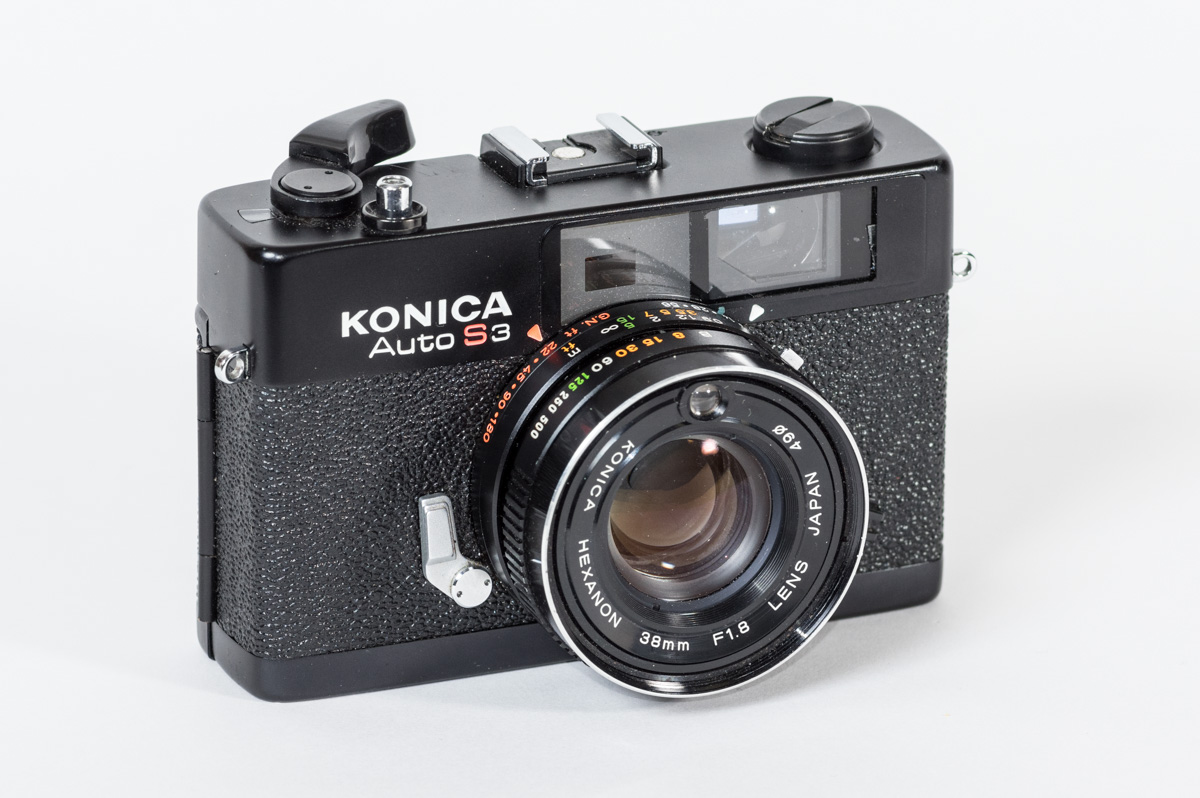
I was in the middle of shooting a roll of Ultrafine Colouruption film which I received from Photo Warehouse when my Konica Auto S3 stopped working. Despite my disappointment I wasn’t going to waste a roll of film so I rewound it and loaded it into my Fuji half frame Fujica Drive but that will be another story. Back to my now dead Konica S3. The S3 has an electronic shutter so will not operate without batteries or in this case power (There were fresh batteries in it). I suspected that it was the battery holder primarily because of that lack of power. The first order of business was to remove the bottom plate which is held in place with just 3 screws.
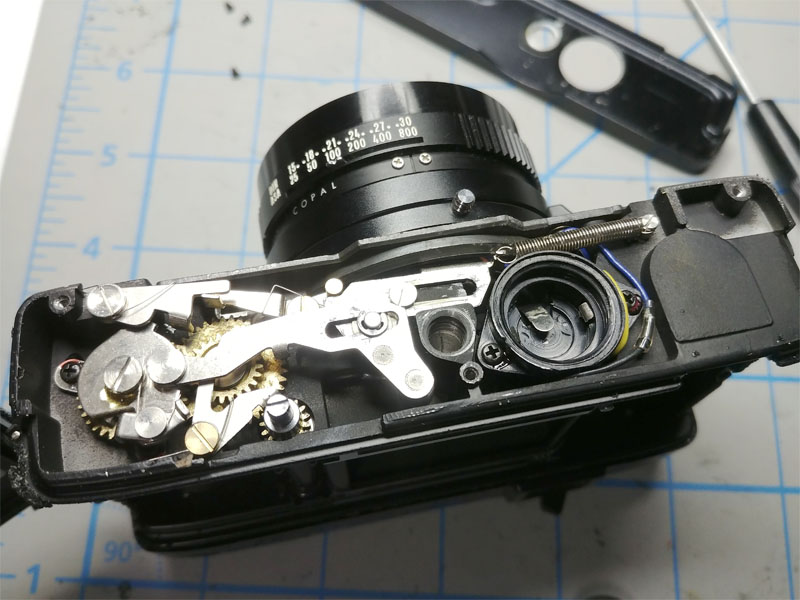
While there is evidence of a little bit of corrosion it doesn’t look too bad so I need to go deeper and remove the holder itself.
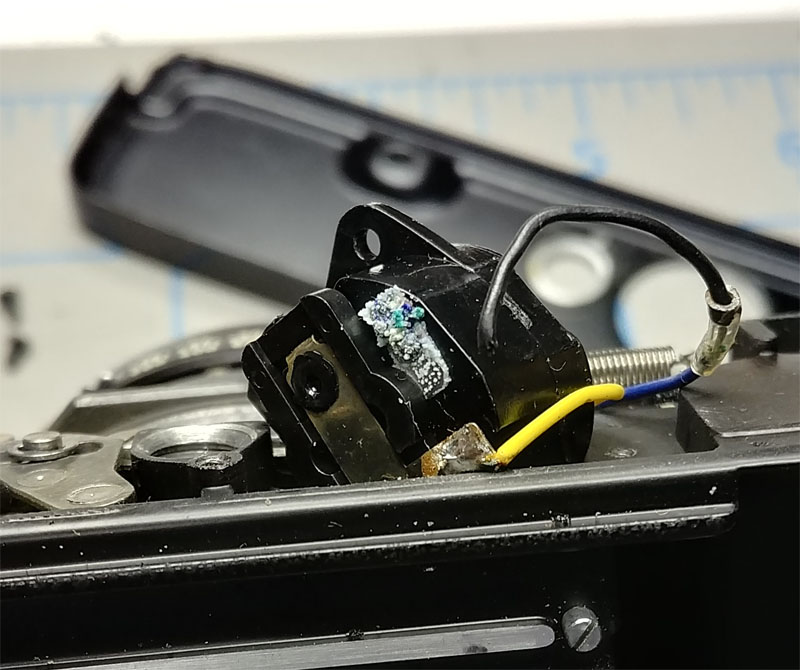
And now its pretty clear what’s happened. One of the battery cables has come completely off with all the corrosion that was hidden underneath.
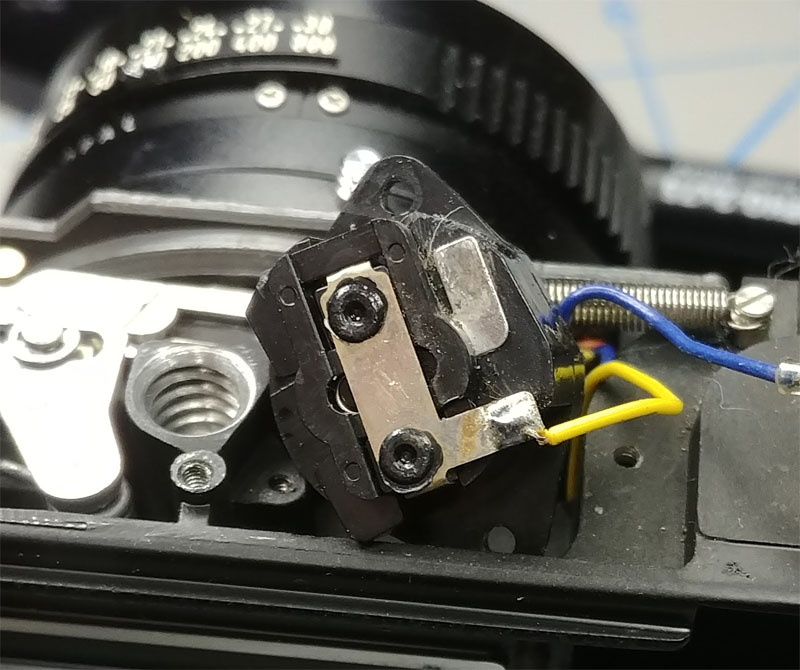
Next I cleaned all the corrosion off and prepared to solder a new piece of wire to the end of the existing lead.
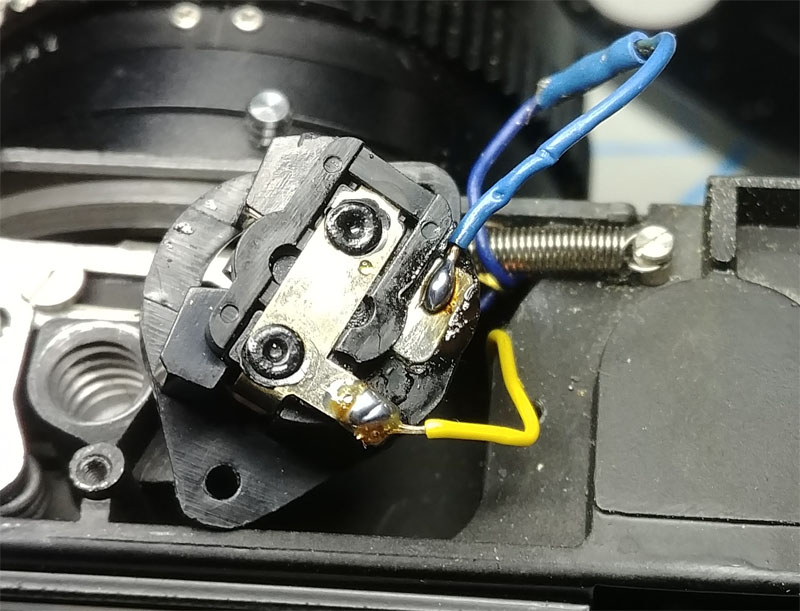
What a struggle it was to get the solder to adhere to the battery tab. In the image above you can see that the solder has formed a little blob around the cable. This is not a sufficient connection. After more flux and frustration I finally managed to get a good solder joint and put it back together.
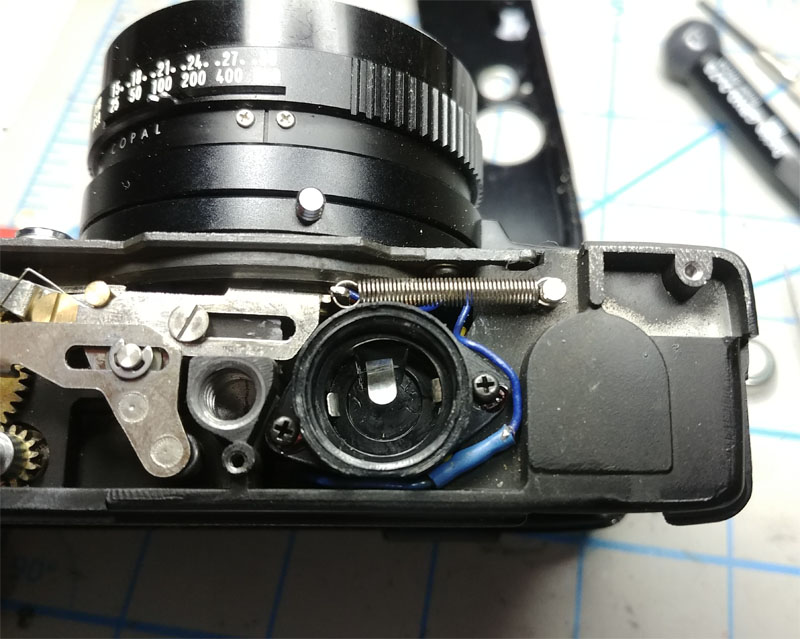
And now I have my Konica Auto S3 back and working. Its such a joy to use I’m looking forward to putting some more film through it.
One thing about one camera: The Konica Auto S3 was claimed to have the first built in daylight flash synchronization. With the Konica X-20 flash mounted you would line up the flash needle with the exposure needle and the light would be balanced.
6 comments | posted in Cameras, Photography
Jan
20
2019
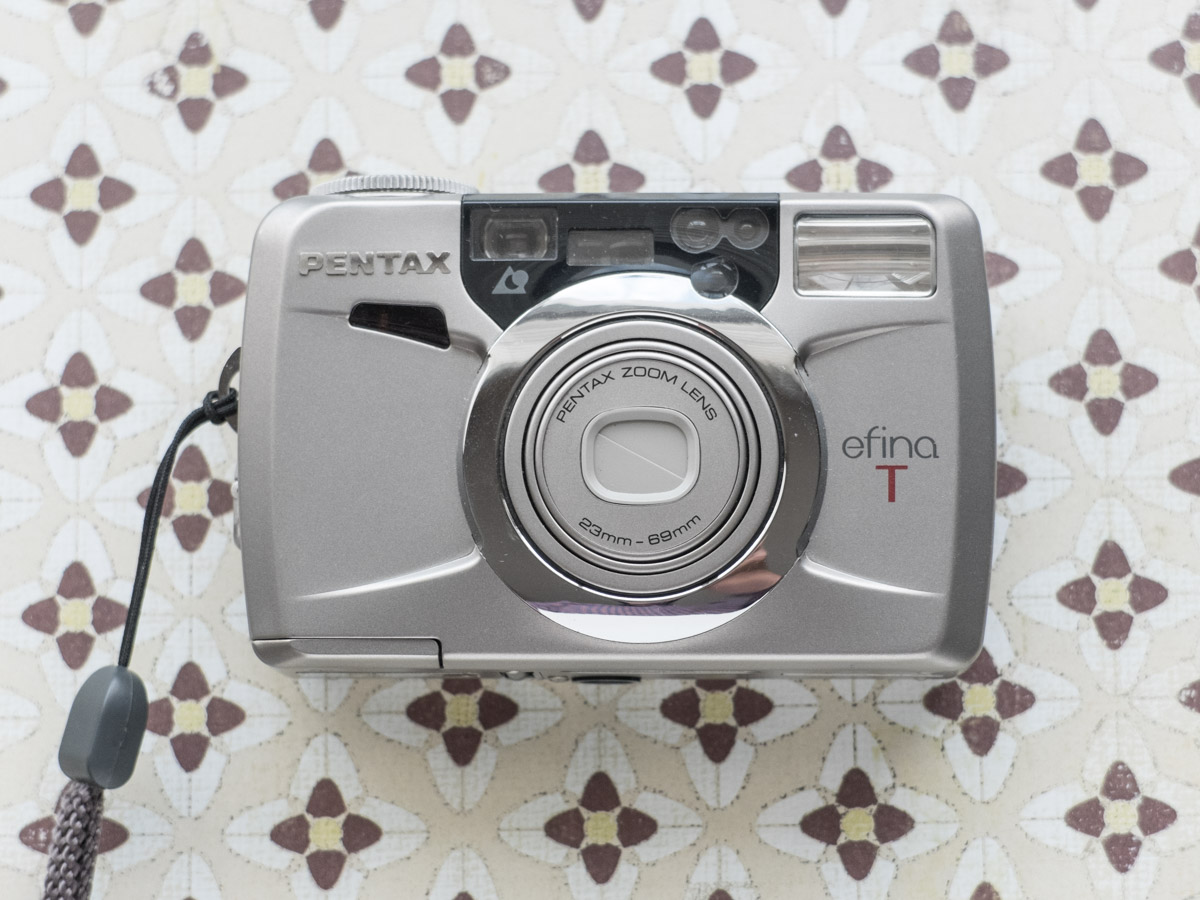
APS film and cameras were the first victims of the burgeoning digital camera revolution. Around the year 2000 you could buy new an APS film camera or a 2Mpixel digital camera or a film or a digital SLR they all coexisted for a brief moment in photographic equipment time. It isn’t surprising of course that APS film was the first to go as it was the most limiting and offered little in image quality over the digital cameras that would soon leave it behind. The thing is for me though that I enjoy cameras themselves as objects of design and technology. The Pentax Efina T represents the best of what APS could be, a small and durable camera that can be carried all the time and produce decent results. (That sounds a lot like what a smart phone provides today)
The lens is a 23-69mm f5.6 to 9.9 with six elements in five groups, two of the elements being aspherical. But who can really tell anymore if its any good when all the remains is outdated poor quality film (Just kidding its actually pretty good). The 23mm focal length is roughly equivalent to a 29mm lens on 35mm film so that’s another reason this camera is my favorite among the APS cameras out there. And don’t forget stylish.
I’ve always been amazed at how solid this camera is and now I believe that this is in part due to it being made from stainless steel. In particular SUS316 a highly corrosion resistant variant. I believe this is the case because the nearly identical Efina T2 is described as being made from it and there is no difference between the two cameras that I can discern.
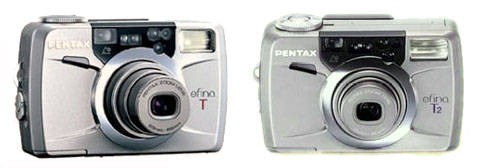
Previous posts about the Efina T Efina T 2016 Efina T 2012 , Rhymes with density , Efina T 2014
1 comment | posted in Cameras, Photography
Jan
12
2019

The lens on the DL mini Zoom goes from 28mm at f4.5 to 56mm at f7.5 neither of these apertures are particularly fast but that is the tradeoff for a compact wide zoom. The lens is comprised of 7 elements in 6 groups. The camera has a good number of functions and settings for a point and shoot including manual focusing which is rare. Looking at some of my images I probably should have resorted to using manual focus particularly through glass as the active autofocus is not able to deal with that situation. Something to be aware of is that the DL mini Zoom will take a picture if you mash the shutter down whether it has achieved focus or not. There is +-2 stops of exposure compensation also a rarity for a point and shoot and nice for situations like backlighting and snow scenes or maybe when you want things a little darker. This camera came out in 1999 which is twenty years ago as of this writing but honestly it looks and feels more modern than most of the digital cameras that soon followed it. A previous post on this camera can be seen here. Fuji DL Mini Zoom
no comments | posted in Cameras, Photography
Jan
6
2019

I took a look at my Lightroom catalogue that holds my film pictures to see how long I have had this camera and apparently its been 4 1/2 years. It certainly doesn’t feel like it, because every time I have a chance to use this camera it feels special like its the first time. Back in 2011 I compared the Canon QL17 and the Yashica Electro 35 GX but this camera beats them both. That’s not to say that those aren’t fantastic cameras but the lens on the Olympus is just that little bit better. The SP has a 7 element lens that is very sharp and well corrected with just a touch of colour fringing in extreme contrast conditions that would tax any lens. I have to admit that I don’t tend to use the spot metering which is actually where the SP in SP comes from but the center weighted metering works very well in its own right. The greatest effect seen within the area of the focus patch at about 20 degrees which drops to 6 degrees for the spot metering. And of course there is the ability to do full manual aperture and shutter speed if you don’t want to use shutter priority or there is fully automatic metering if all you want to do is focus and compose. In automatic mode the camera selects from 1/15 to 1/250 second so if you want to use the camera outside that range you should opt for manual settings. In manual operation it expands to 1sec and 1/500sec The shutter itself has a very definitive “THWACK” that leaves you no doubt that it has done its job. If I was to have one complaint about the Olympus SP it would be the focus lever tucked up against the camera body. I prefer to use a focus ring at the business end of the lens.
no comments | posted in Cameras, Photography
Dec
29
2018

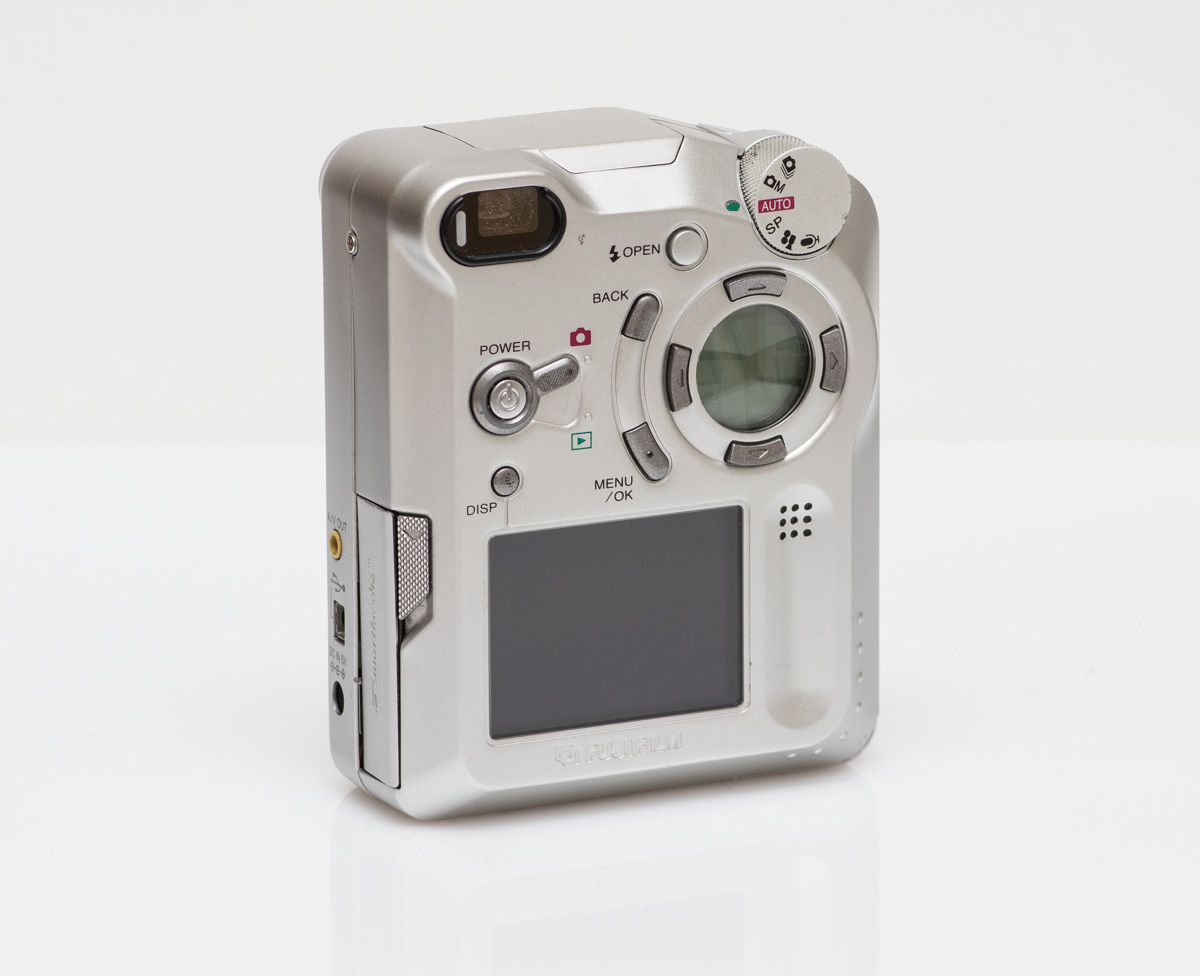
Lets be honest the Fuji 6800z cant be considered as a viable photography tool after 17 years but as an object of design it is interesting. It sits well outside the norms of how we expect cameras to look and function today. It wasn’t the first camera in the line to have this upright form factor but it was the last and arguably the nicest. The differences in design between it and the previous 4700z may be attributed to the use of an outside design firm F.A. Porsche and the choice to use higher quality materials. Briefly digressing to talking about it as a camera it used what Fuji referred to as a super CCD and as you may notice it doesn’t say how many megapixels it was on the outside which seemed like it was almost a bylaw for cameras at the time to have. This may be due to the fact that it used interpolation to go from its native 3.3mpixels to 6.6mpixels with a lot of debate and controversy to go with it.
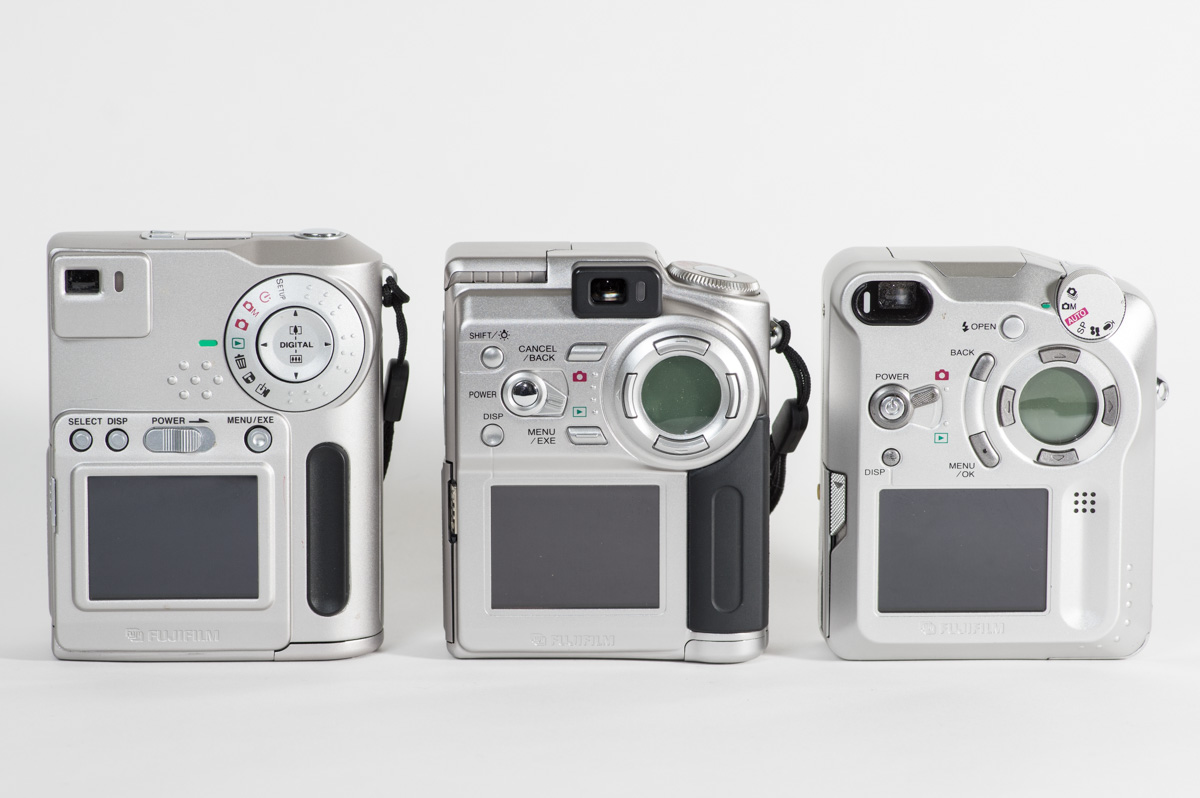
From Left to right the Fuji Finepix 700, 4700 Zoom, 6800Z
Porsche Design has refined the vertically shaped design of the two FinePix cameras, ensuring improved grip for safer and more comfortable handling. Switches and other operational buttons are also clearly laid out on the back of the camera body, enabling all operations to be carried out using one hand in a truly user-friendly design. Other design improvements are apparent, too. For example, the small dot matrix LCD inside the four-direction button is brighter and thus easier to use than those in earlier models.
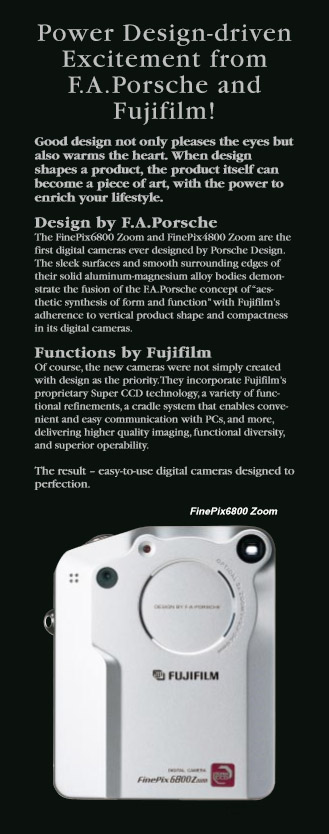
I don’t think that any camera companies would attempt a design like this today (2018). It strikes me as ironic that after the burst of different digital camera design ideas it has been the more traditional looking cameras that wouldn’t look out of place beside many film cameras that have won out. Even phones which are arguably the point and shoot cameras of today have settled into what looks like a single form factor with outlier’s being smacked down by the market.
no comments | posted in Cameras, Photography
Dec
22
2018

The problem with writing about older cameras is that there tends to be nothing new about them. That issue is multiplied by the number of versions of this particular camera that are out there. Personally I wouldn’t pay the prices some people ask for the Leica mini particularly because the same camera exists as the: Minolta Freedom Escort, Olympus Trip AF mini, Panasonic Super Mini, Blacks Sassy and possibly others and they tend to be had for far less money. However if you want a Leica and your on a budget here’s your camera.
 Notice how they say Leica design lens not that it is a Leica lens although if your using this camera and that matters to you then the question is “Why are you using this camera?” And because that doesn’t matter to me here are the obligatory pictures from it.
Notice how they say Leica design lens not that it is a Leica lens although if your using this camera and that matters to you then the question is “Why are you using this camera?” And because that doesn’t matter to me here are the obligatory pictures from it.
no comments | posted in Cameras, Photography

















































































































































